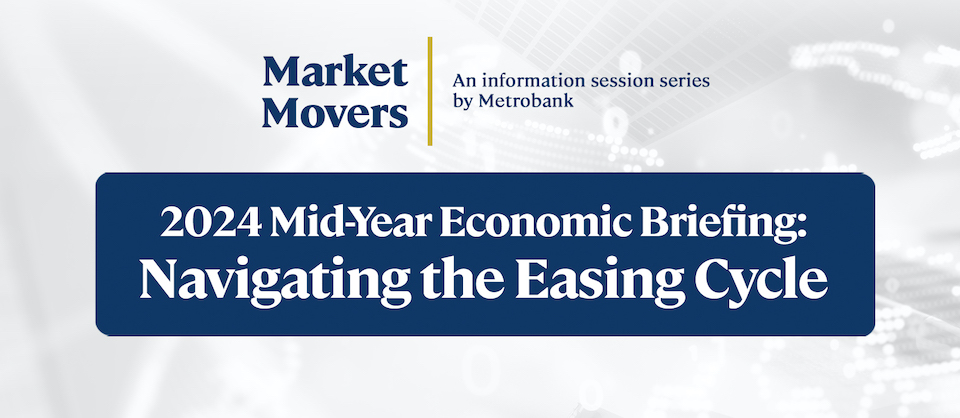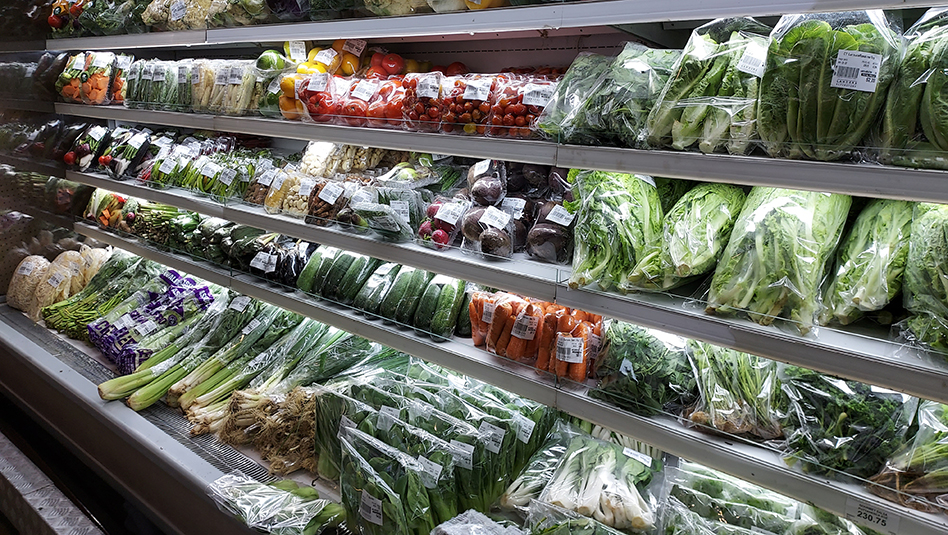Region: Japan
Read this content. Log in or sign up.
If you are an investor with us, log in first to your Metrobank Wealth Manager account.
If you are not yet a client, we can help you by clicking the SIGN UP button.

Fundamental View
AS OF 10 Jul 2024Honda continues to post impressive growth in its Automobile segment wholesale volumes and profitability following the normalization of its supply chain. While Motorcycle wholesale volumes remain pressured by weak economic conditions in Vietnam, volumes are increasing in most other regions. Honda posted significantly higher YoY profit in its automobile segment, supported by margin expansion from the motorcycle segment in its FY24 reporting. Management expects to lean into the increasing demand for hybrid vehicles by introducing a Civic hybrid this year that it expects should account for about 40% of the models’ sales in the U.S.
For additional information on Honda Motor Corporation see Honda Motor.
Business Description
AS OF 10 Jul 2024- Honda Motor Co., Ltd. engages in the manufacture and sale of automobiles, motorcycles, and power products. It operates through the following segments: Automobile, Motorcycle, Financial Services, and Power Product and Other Businesses. The Automobile segment manufactures and sells automobiles and related accessories. The Motorcycle segment handles all-terrain vehicles, motorcycle business, and related parts. The Financial Services segment provides financial and insurance services. The Power Product and Other Businesses segment offers power products and relevant parts.
- American Honda Finance Corporation (AHFC) is a wholly-owned subsidiary of American Honda Motor Co., Inc. (AHM or the Parent). Honda Canada Finance Inc. (HCFI) is a majority-owned subsidiary of AHFC. Non-controlling interest in HCFI is held by Honda Canada Inc. (HCI), an affiliate of AHFC. AHM is a wholly-owned subsidiary and HCI is an indirect wholly-owned subsidiary of Honda Motor Co., Ltd. (HMC). Honda Motor Co. (HMC) maintains Keep Well (support) agreements with its North American finance subsidiaries, AHFC and HCFI. Under the Keep Well agreements, HMC agrees to (1) maintain at least 80% ownership in AHFC and HCFI, (2) ensure AHFC and HCFI maintain a positive net worth, and (3) ensure both AHFC and HCFI have sufficient liquidity to meet their debt payment obligations.
Risk & Catalysts
AS OF 10 Jul 2024Management unveiled its FY25 guidance, including flat automobile wholesale volumes, and a modest increase of +5% YoY in global motorcycle volumes driven primarily by growth in Asia. Global automotive wholesales of 4.1 mn units anticipates incremental unit growth in North America and Japan, offsetting volume declines in Asia. Consolidated volumes are expected to increase modestly in FY25 while sales revenues are expected to decline 1% and operating profit is expected to increase 3% YoY as the positive impacts of elevated selling prices is expected to more than offset increased labor costs.
Changes in hybrid vehicle architecture, through increased design commonality, have resulted in increased power density and cost efficiency expected to continue improving through the decade’s end, supporting longer-term operating profit margins of 7%. Consolidated operating profit margins are expected to expand 20 bp to 7% in FY25 as the benefits of stronger pricing are expected to be nearly offset by increased warranty expense, greater R&D expenditures and currency headwinds.
Key Metrics
AS OF 10 Jul 2024| $ mn | FY20 | FY21 | FY22 | FY23 | FY24 |
|---|---|---|---|---|---|
| Total Company Earning Assets | 73,397 | 76,778 | 71,105 | 65,363 | 74,626 |
| Cash and Investments | 1,503 | 1,870 | 2,607 | 1,544 | 1,670 |
| Excess Liquidity | 8,503 | 8,870 | 9,607 | 8,544 | 8,670 |
| Unsecured Debt | 40,399 | 43,037 | 38,026 | 33,410 | 41,566 |
| Secured Debt | 9,748 | 8,890 | 8,888 | 6,927 | 9,351 |
| Total Debt | 50,147 | 51,927 | 46,914 | 40,337 | 50,917 |
| Allowance % Retail Rece. | 1.07% | 0.75% | 0.58% | 0.71% | 0.80% |
| Allowance / Net Charge-offs | 1.68x | 2.41x | 3.75x | 2.41x | 1.72x |
| Net Charge-offs % Avg. Receivable | 0.63% | 0.33% | 0.15% | 0.29% | 0.52% |
| 30+ Day Delinquency Rate | 1.2% | 0.7% | 1.1% | 1.2% | 1.2% |
CreditSights View
AS OF 11 Jul 2024We are maintaining our Underperform recommendations on Honda Motor Co. (HMC) and American Honda Finance Corporation (AHFC) based on relative value, the company’s dominant position and resilient performance within the Motorcycle segment, expected sustained improvement within its Automobile segment performance in FY24, its EV strategy that lags most peers, and its excellent liquidity and stable credit rating.
Recommendation Reviewed: July 11, 2024
Recommendation Changed: January 13, 2023
Who We Recommend


How may we help you?
Search topics about wealth insights and investments.Read this content. Log in or sign up.
If you are an investor with us, log in first to your Metrobank Wealth Manager account.
If you are not yet a client, we can help you by clicking the SIGN UP button.

Fundamental View
AS OF 07 Mar 2024Mizuho (A1/A-/A-) undertook large restructuring charges in FY18 to improve its weak returns. Its performance improved in FY20 and FY21, though a series of Japan IT system failures was a distraction. FY22 was a mixed year due to challenging revenue growth, but 3Q23 has been better.
Mizuho’s CET1 ratio buffer has improved but is somewhat low at 1.6%, but is acceptable given comfortable asset quality metrics.
As one of the three megabanks, Mizuho’s credit standing benefits from a strong expectation of government support, if needed.
Business Description
AS OF 07 Mar 2024- Mizuho is just about the third largest by asset size among Japan's three megabanks. It was formed in 2000 through the merger of the former "City" banks, Fuji and Dai-Ichi Kangyo, and the Industrial Bank of Japan, a provider of long-term industrial credit financed by bond issues.
- Its main units are Mizuho Bank and Mizuho Trust & Banking (focusing on asset management and related services). The group's other main business is Mizuho Securities, a leading player in debt capital markets in Japan and the US.
- It expanded in North America in 2015 by acquiring assets and staff from RBS and has successfully captured more markets and commercial banking business in conjunction with its securities arm. It also acquired Greenhill, a boutique M&A firm, in 2023.
- Mizuho is less diversified than its peers by product segment and has historically been more corporate focused.
Risk & Catalysts
AS OF 07 Mar 2024Asset quality has been benign and not much affected by COVID-19 up to and throughout FY21; credit costs in FY22 decreased to a low 8 bp of loans and down to a further 1 bp in 9M23.
The CET1 ratio (fully Basel III compliant and ex-security gains) is 1.6% above the 8% regulatory minimum, which is fairly low level but acceptable for now given benign asset quality.
FY22 was a mixed year for Mizuho as the bottomline was propped up by reduced credit costs, while revenue growth continued to be anemic as was the case over the previous few years. 9M23 has been helped by a large trading beat.
Mizuho has correctly started to make investments in building its capabilities (Greenhill/Rakuten), which it had shied away from for a 7-8yr period due to low capital levels and a focus on reducing expenses.
Key Metrics
AS OF 07 Mar 2024| ¥ bn | FY19 | FY20 | FY21 | FY22 | 9M23 |
|---|---|---|---|---|---|
| Net Interest Revenue/Ave Assets | 0.36% | 0.42% | 0.44% | 0.41% | 0.35% |
| Operating Income/Average Assets | 1.02% | 1.03% | 1.01% | 0.96% | 1.05% |
| Operating Expense/Operating Income | 67% | 64% | 62% | 63% | 59% |
| Pre-Impairment Operating Profit / Average Assets | 0.33% | 0.37% | 0.38% | 0.34% | 0.43% |
| Loan impairment (charge) or reversal/ave. loans | (0.21%) | (0.25%) | (0.28%) | (0.10%) | (0.02%) |
| ROAA | 0.22% | 0.22% | 0.24% | 0.23% | 0.34% |
| ROAE | 5.2% | 5.3% | 5.8% | 6.1% | 9.0% |
| CET1 Ratio excl. unrealised securities gains in AOCI | 11.0% | 10.5% | 11.5% | 11.3% | n/m |
CreditSights View
AS OF 16 May 2024Mizuho has historically trailed its peers on profitability and capital, as the merger that formed it included the former IBJ, a large wholesale bank with thin profit margins. Low profitability and capital prevented investments in new opportunities. FY20-21 saw good improvements in net interest income and mostly lower credit costs vs. peers. Credit costs related to Russia in 4Q21 and Japan corps in 1Q22 affected results but were better subsequently. Previous issues with its Japan IT system have not resurfaced recently. CET1 capital has a ~1.7% buffer which is low but acceptable. Mizuho was the improved megabank over FY20-21. FY22 net income declined, but FY23 has seen a jump due to better trading revenues and low credit costs. It has finally restarted investments in new product/M&A.
Recommendation Reviewed: May 16, 2024
Recommendation Changed: December 05, 2022
Who We Recommend


How may we help you?
Search topics about wealth insights and investments.Read this content. Log in or sign up.
If you are an investor with us, log in first to your Metrobank Wealth Manager account.
If you are not yet a client, we can help you by clicking the SIGN UP button.

Fundamental View
AS OF 07 Mar 2024MUFG is the largest of Japan’s three megabanks, and has the most diversified operations by business line and geography. It has also been the most acquisitive until recently.
Core profitability had been weak due to Japan’s ultra-low interest rates and growth; that improved post an efficiency drive and a CEO change in April 2020. The bank has committed to at least JPY 1 tn in annual net income going forward, which we see as achievable.
Given its size and systemic importance, MUFG is considered too big to fail, and will be supported by the Japanese government if needed.
Business Description
AS OF 07 Mar 2024- The 2 main banks of MUFG are MUFG Bank (earlier the Bank of Tokyo-Mitsubishi UFJ or BTMU) & Mitsubishi UFJ Trust & Banking. In the early stages of Japan's long banking crisis, Bank of Tokyo merged with Mitsubishi Bank, and in the late stages they absorbed UFJ (former Sanwa Bank & Tokai Bank) while Mitsubishi Trust absorbed Toyo Trust & Nippon Trust.
- The group includes consumer lenders Mitsubishi-UFJ NICOS & ACOM, and securities/IB joint ventures with Morgan Stanley. MUFG invested in Morgan Stanley in 2008 and now has a ~20% stake. In Dec-22, it completed the sale of its US retail and commercial bank, MUFG Union Bank, to US Bancorp.
- It has a majority stake in Thailand's Bank of Ayudhya (now Krungsri), 20% stakes in Vietnam's Vietinbank and Philippines' Security Bank, and has acquired control of Indonesia's Bank Danamon.
- In August 2019, it acquired Colonial First State from Commonwealth Bank of Australia to strengthen its global asset management business, in 2020 it invested $700 mn in SE Asia's Grab, and more recently has bought Home Credit's Philippine and Indonesian subsidiaries, Link, an Australian pension fund administrator, auto loan companies in Indonesia, Albacore Capital, an alternates fund manager, and StanChart's Indonesian retail operations.
Risk & Catalysts
AS OF 07 Mar 2024The group’s cost-income ratio was previously in the high 60’s, but improved efficiency, the sale of MUFG Union Bank (MUB) in the US, and better revenues has led to this ratio falling to the high 50’s.
MUFG is exposed to Japanese equities through large unrealised gains, but has steadily been decreasing its shareholdings every year. It reduced the MTM impact of rising yields on its $ bond portfolio, as well as the potential impact on its JGB portfolio given the modifications to yield curve controls.
MUFG had a good FY22 with impressive margin improvement, lower credit costs and the completion of the MUB sale. It has set a net income target of JPY 1.3 tn for FY23, by improving net operating profits in customer segments and expense control; it has met it in 9M23 aided by certain one-offs.
Key Metrics
AS OF 07 Mar 2024| ¥ bn | FY19 | FY20 | FY21 | FY22 | 9M23 |
|---|---|---|---|---|---|
| Net Interest Revenue/Average Assets | 0.60% | 0.56% | 0.57% | 0.79% | 0.63% |
| Operating Income/Average Assets | 1.27% | 1.16% | 1.11% | 1.22% | 1.27% |
| Operating Expense/Operating Income | 70% | 68% | 69% | 65% | 58% |
| Pre-Impairment Operating Profit / Average Assets | 0.38% | 0.37% | 0.34% | 0.43% | 0.50% |
| Impairment charge/Average Loans | (0.21%) | (0.48%) | (0.30%) | (0.61%) | (0.31%) |
| ROAA | 0.17% | 0.23% | 0.32% | 0.30% | 0.45% |
| ROAE | 3.3% | 4.7% | 6.7% | 6.5% | 9.6% |
| CET1 Ratio excluding unrealised securities gains in AOCI | 9.8% | 9.7% | 9.5% | 9.8% | n/m |
CreditSights View
AS OF 16 May 2024MUFG is the largest of the megabanks with more diversified business lines. Digitalisation and operational efficiency improvements are underway and efficiency has improved over the past 2-3 years, particularly with the sale of Union Bank in the US. Acquisitions have become more targeted. Capital levels are adequate (and have received a bump up from the Basel 3 implementation timeline), $ liquidity is the best amongst the megabanks, and government support is assured. Lending discipline has lifted international margins, which are now well higher than the other two. Divisional performance was reasonable in FY23. Its ~20% shareholding in Morgan Stanley has been a boon. The recent jump in Americas NPLs does raise some questions. It trades slightly back of JPM, which we see as appropriate.
Recommendation Reviewed: May 16, 2024
Recommendation Changed: January 02, 2024
Who We Recommend


How may we help you?
Search topics about wealth insights and investments.Read this content. Log in or sign up.
If you are an investor with us, log in first to your Metrobank Wealth Manager account.
If you are not yet a client, we can help you by clicking the SIGN UP button.

Fundamental View
AS OF 04 Mar 2024Honda continues to post impressive growth in its Automobile segment wholesale volumes and profitability following the normalization of its supply chain. Management expects to lean into the increasing demand for hybrid vehicles by introducing a Civic hybrid this year that it expects to account for about 40% of the models’ sales in the U.S. It is also introducing its first high volume electric vehicles in 2024 under the Honda and Acura brands, along with a fuel cell electric vehicle (FCEV). Like Toyota, Honda’s electrification strategy has been focused primarily on hybrid vehicles, although its introduction of electric and FCEVs is timely even if it lags most competitors.
Business Description
AS OF 04 Mar 2024- Honda Motor Co., Ltd. engages in the manufacture and sale of automobiles, motorcycles, and power products. It operates through the following segments: Automobile, Motorcycle, Financial Services, and Power Product and Other Businesses. The Automobile segment manufactures and sells automobiles and related accessories. The Motorcycle segment handles all-terrain vehicles, motorcycle business, and related parts. The Financial Services segment provides financial and insurance services. The Power Product and Other Businesses segment offers power products and relevant parts.
- American Honda Finance Corporation (AHFC) is a wholly-owned subsidiary of American Honda Motor Co., Inc. (AHM or the Parent). Honda Canada Finance Inc. (HCFI) is a majority-owned subsidiary of AHFC. Non-controlling interest in HCFI is held by Honda Canada Inc. (HCI), an affiliate of AHFC. AHM is a wholly-owned subsidiary and HCI is an indirect wholly-owned subsidiary of Honda Motor Co., Ltd. (HMC). Honda Motor Co. (HMC) maintains Keep Well (support) agreements with its North American finance subsidiaries, AHFC and HCFI. Under the Keep Well agreements, HMC agrees to (1) maintain at least 80% ownership in AHFC and HCFI, (2) ensure AHFC and HCFI maintain a positive net worth, and (3) ensure both AHFC and HCFI have sufficient liquidity to meet their debt payment obligations.
Risk & Catalysts
AS OF 04 Mar 2024Management maintained its FY24 wholesale volume guidance but raised its revenue and operating profit guidance. Consolidated revenue is now expected to increase +19% compared to its previous expectation for +18% growth despite modestly lower expectations for automobile and motorcycle unit sales. Management raised its consolidated operating profit guidance by 4% based on favorable pricing and currency effects offsetting higher warranty expense and unfavorable mix. The company’s FY24 forecast now envisions a 160 bp operating margin expansion from 4.6% in FY23 to 6.2%, up from its previous expectation of a 140 bp YoY margin expansion.
On January 18, 2024, American Honda management unveiled its expectations for its calendar year 2024 sales. After posting 33% growth in unit sales in 2023, American Honda is targeting unit sales growth of 10%-15% in 2024. The volume growth is projected to include an increase in hybrid volume, including the Honda Civic hybrid that will comprise about 40% of the models’ sales when it launches this summer.
Key Metrics
AS OF 04 Mar 2024| ¥ bn | FY20 | FY21 | FY22 | FY23 | LTM F3Q24 |
|---|---|---|---|---|---|
| Revenue | 12,344 | 10,908 | 11,967 | 14,167 | 16,533 |
| EBIT | 578 | 576 | 741 | 671 | 888 |
| EBIT Margin | 4.7% | 5.3% | 6.2% | 4.7% | 6.7% |
| EBITDA | 1,216 | 1,175 | 1,334 | 1,352 | 1,621 |
| EBITDA Margin | 9.8% | 10.8% | 11.1% | 9.5% | 10.7% |
| Total Liquidity | 3,611 | 3,717 | 4,612 | 4,926 | 5,432 |
| Net Debt | (1,931) | (2,048) | (2,481) | (2,751) | (3,183) |
| Total Debt | 532 | 480 | 837 | 803 | 877 |
| Gross Leverage | 0.4x | 0.4x | 0.6x | 0.6x | 0.5x |
| Net Leverage | -1.6x | -1.7x | -1.9x | -2.0x | -2.0x |
CreditSights View
AS OF 22 May 2024We are maintaining our Underperform recommendations on Honda Motor Co. (HMC: A3/A-/A; S/S/S) and American Honda Finance Corporation (AHFC: A3/A-/A; S/S/S) notes based on relative value, the company’s dominant position and resilient performance within the Motorcycle segment, strong improvement within its Automobile segment performance in FY24, its EV strategy that lags most peers, and its excellent liquidity and stable credit rating.
Recommendation Reviewed: May 22, 2024
Recommendation Changed: January 13, 2023
Who We Recommend


How may we help you?
Search topics about wealth insights and investments.Read this content. Log in or sign up.
If you are an investor with us, log in first to your Metrobank Wealth Manager account.
If you are not yet a client, we can help you by clicking the SIGN UP button.

Fundamental View
AS OF 04 Mar 2024Nissan remains a turnaround work-in-progress, having made significant progress in improving its automotive profitability in the past few years but falling short of its 5.0% China JV Proportionate Basis operating margin target by FY23 set out in its Nissan NEXT plan. A primary reason for the profit shortfall is its volumes, which remain short of its 4.0 mn target and hinder its fixed cost absorption. While the reasons for the volume shortfall are understandable, including its China strategy revamp due to changing market dynamics in that country along with transitory logistics challenges, we believe improved volumes in FY24 could be key in enabling Nissan to improve automotive profitability in the direction of most OEM peers and reigniting positive ratings momentum.
Business Description
AS OF 04 Mar 2024- Nissan, with headquarters in Yokohama, Japan, is a leading global automotive manufacturer with a market presence in many countries around the globe. The company’s growth investments are focused primarily on Japan, North America, and China, core markets with large profit pools in which Nissan has a meaningful market share. The company’s business in China is conducted through a joint venture with Dongfeng Motor Corporation.
- Nissan’s Sales Financing segment supports the sale of its vehicles by providing financing solutions to its customers and dealers. To enhance their creditworthiness, Nissan maintains keepwell (support) agreements with its wholly owned financial subsidiaries including Nissan Motor Acceptance Corporation (NMAC) in the United States and Nissan Financial Services (NFS) in Japan.
- The Renault-Nissan-Mitsubishi Alliance was established in 1999 to enhance member company scale in product development and raw material purchasing. The alliance includes equity participation, which led to Nissan holding ownership stakes in Renault (15% non-voting) and Mitsubishi (34%) and Renault holding an ownership stake in Nissan (43%). The Alliance’s automobile production volume is the third largest globally behind Toyota and Volkswagen.
Risk & Catalysts
AS OF 04 Mar 2024Nissan once again lowered its FY23 retail sales volume target to 3.55 mn units from a target of 3.70 mn units last quarter and an original FY23 target of 4.00 mn units it unveiled in May 2023. The volume guidance reductions in the first two quarters of FY23 reflected Nissan’s revised Chinese strategy to reduce production and sales targets based on the changing dynamics of the Chinese automotive industry. The company also lowered its sales target in other Asian countries, primarily India, as it reboots is business in that country via its new Renault-Nissan-Mitsubishi Alliance.
Management maintained its FY23 financial guidance for revenue, operating profit, and net income. While the FY23 retail sales volume target was lowered compared to last quarter’s guidance, the volume still represents an expected 8% YoY increase. The guidance reflects improving volume trends in the fourth quarter, resilient pricing, and its revised outlook for a weaker Yen compared to previous expectations. The outlook calls for an FY23 operating margin (equity basis) of 4.8%, or an expected 120 bp margin expansion compared to its FY22 margin of 3.6%.
Key Metrics
AS OF 04 Mar 2024| ¥ bn | FY19 | FY20 | FY21 | FY22 | LTM F3Q23 |
|---|---|---|---|---|---|
| Revenue | 8,716 | 6,843 | 7,393 | 9,573 | 11,159 |
| EBIT | (183) | (471) | (42) | 242 | 391 |
| EBIT Margin | (2%) | (7%) | (1%) | 3% | 2% |
| EBITDA | 183 | (199) | 252 | 592 | 750 |
| EBITDA Margin | 2.1% | (2.9%) | 3.4% | 6.2% | 5.6% |
| Total Liquidity | 2,795 | 4,096 | 3,601 | 3,660 | 3,416 |
| Net Debt | (1,065) | (636) | (728) | (1,213) | (1,331) |
| Total Debt | 430 | 1,260 | 973 | 687 | 335 |
| Gross Leverage | 2.3x | 8.3x | 3.9x | 1.2x | 0.4x |
| Net Leverage | -5.8x | -1.2x | -2.9x | -2.0x | -1.8x |
CreditSights View
AS OF 22 May 2024We lower our recommendation on notes of Nissan (NSANY: Baa3/BB+/BBB-; S/S/S) and Nissan Motor Acceptance Corp. (NMAC) from Outperform to Market perform based on our view its credit rating will not likely be upgrade by S&P in the near term, driven in part by uncertainty the company’s revitalized product lineup can drive sustainable retail sales growth and improved fixed cost absorption.
Recommendation Reviewed: May 22, 2024
Recommendation Changed: May 10, 2024
Who We Recommend


How may we help you?
Search topics about wealth insights and investments.Read this content. Log in or sign up.
If you are an investor with us, log in first to your Metrobank Wealth Manager account.
If you are not yet a client, we can help you by clicking the SIGN UP button.

Fundamental View
AS OF 29 Feb 2024Toyota’s slower ramp of battery electric vehicle (BEV) production and sales relative to its peers was a common investor concern a year ago. However, with the recent slowdown in consumer adoption of BEVs in North America and Europe and Toyota’s dominance in the hybrid electric vehicle (HEV) market, those concerns have abated, at least for the time being. Importantly, Toyota management has indicated its profitability of its HEV portfolio is on par with its ICE portfolio profitability. We continue to believe that Toyota’s market leading position in HEVs provides consumers with a more eco-friendly option than traditional ICE vehicles that can serve as a bridge to EVs while the charging infrastructure is built out and the cost of producing EVs is reduced.
Business Description
AS OF 29 Feb 2024- Toyota Motor Corp. (TMC) engages in the manufacture and sale of motor vehicles and parts. It operates through the following segments: Automotive, Financial Services, and All Other. The Automotive segment designs, manufactures, assembles and sells passenger cars, minivans, trucks, and related vehicle parts and accessories. It is also involved in the development of intelligent transport systems. The Financial Services segment offers purchase or lease financing to Toyota vehicle dealers and customers. It also provides retail leasing through lease contracts purchased by dealers. The company was founded by Kiichiro Toyoda on August 28, 1937, and is headquartered in Toyota, Japan.
- Toyota Financial Services Corporation (TFSC), a wholly owned subsidiary of TMC, oversees the management of Toyota's finance companies worldwide. Toyota Motor Credit Corporation (TMCC) is the company’s principal financial services subsidiary in the United States. Under terms of the credit support agreement between TFSC and TMCC, TFSC agrees to: (1) maintain 100% ownership of TMCC; (2) cause TMCC and its subsidiaries to have a tangible net worth of at least $100,000; (3) make sufficient funds available to TMCC so that it will be able to service the obligations arising out of its own bonds, debentures, notes and other investment securities and commercial paper. The terms of the credit support agreement between TMC and TFSC are very similar to the terms of the TFSC and TMCC credit support agreement.
Risk & Catalysts
AS OF 29 Feb 2024Toyota lowered its FY24 wholesale unit forecast based on a downward revision of expected wholesales in Japan, partially offset by a projected increase in wholesales in North America and Europe. The company now expects to wholesale 9.45 mn units in FY24, a 7% YoY increase, down from its previous projection of 9.60 mn units or a 9% YoY increase. The lower wholesale shipments in Japan is largely due to the suspension of shipments of Daihatsu due concerns regarding side-collision safety tests on its small cars.
Management raised its FY24 revenue and operating income forecasts based on an expected increase in current benefits and cost reduction efforts, partially offset by higher operating expenses. The FY24 revenue forecast was boosted by 1% from its previous forecast and now represents projected revenue growth of 17% YoY. Its FY24 consolidated operating income projection was increased 9% above its previous projection, following a more than 50% projection increase last quarter. The consolidated operating profit improvement represents an expectation for a 400 bp YoY operating profit margin expansion.
Key Metrics
AS OF 29 Feb 2024| ¥ bn | FY20 | FY21 | FY22 | FY23 | LTM F3Q24 |
|---|---|---|---|---|---|
| Automotive Revenue | 26,800 | 24,652 | 28,606 | 33,777 | 40,007 |
| EBIT | 2,124 | 1,778 | 2,519 | 2,486 | 4,482 |
| EBIT Margin | 7% | 7% | 8% | 7% | 13% |
| EBITDA | 2,946 | 2,654 | 3,526 | 3,671 | 5,699 |
| EBITDA Margin | 9.9% | 9.8% | 11.2% | 9.9% | 15.6% |
| Total Liquidity | 9,890 | 11,557 | 15,864 | 17,725 | n/m |
| Net Debt | (447) | 597 | (1,719) | (2,825) | (2,825) |
| Total Debt | 2,235 | 3,872 | 2,580 | 2,724 | 2,724 |
| Gross Leverage | 0.8x | 1.5x | 0.7x | 0.7x | 0.5x |
| Net Leverage | -0.2x | 0.2x | -0.5x | -0.8x | -0.5x |
CreditSights View
AS OF 07 Jun 2024We reiterate our Underperform recommendations on notes of Toyota Motor Co. (TOYOTA: A1/A+/A+; S/S/S) and Toyota Motor Credit Corporation (TMCC: A1/A+/A+; S/S/S) based primarily on relative value. Toyota reported record profit in FY24 and announced increased investments in labor, suppliers, and BEVs in FY25 that it expects to reduce operating profit 20%. We applaud the investments that we believe should further its new energy vehicle offerings well beyond its hybrid electric vehicles (HEVs), which account for more than one-third of its sales. We believe the Toyota bond complex is fairly valued at current levels but will continue to underperform the broader market and the A-rated index owing to its high-A credit rating and short duration.
Recommendation Reviewed: June 07, 2024
Recommendation Changed: January 13, 2023
Who We Recommend


How may we help you?
Search topics about wealth insights and investments.Read this content. Log in or sign up.
If you are an investor with us, log in first to your Metrobank Wealth Manager account.
If you are not yet a client, we can help you by clicking the SIGN UP button.

Fundamental View
AS OF 26 Feb 2024SMFG has had a relatively good record of managing risk and returns. It is has the highest headline CET1 ratio amongst the three megabanks, although it has been reduced by acquisitions, which have been used to bulk up its presence in aircraft leasing, capital markets, Southeast Asia, and India.
The profitability of SMFG, just about the second largest Japanese megabank, was affected by poor results from its non-SMBC subsidiaries in FY22. However, the non-SMBC subsidiaries appear to have turned a corner since 3Q22, while SMBC had a better 3Q23 after a more challenging 1H23.
Given its size and systemic importance, SMFG is considered too big to fail, and will be supported by the Japanese government if needed.
Business Description
AS OF 26 Feb 2024- The core unit of SMFG is Sumitomo-Mitsui Banking Corp (SMBC), whose main predecessors were Sumitomo Bank and Mitsui Bank.
- SMFG does not have a large trust business as Sumitomo Trust and Chuo Mitsui Trust chose not to join SMFG, but merged with each other to form the separate Sumitomo Mitsui Trust Holdings.
- SMFG's group companies include the securities firm SMBC Nikko, SMBC Trust Bank, SMBC Card Company, SMBC Consumer Finance, Sumitomo Mitsui Finance and Leasing, SMFG India Credit Company (SMICC) Sumitomo Mitsui DS Asset Management, and SMBC Aviation Capital.
- It has been acquisitive over the years, particularly in higher margin leasing assets. In 2021, the group took a 49% stake in Vietnam's FE Credit, 74.9% of Indian NBFI Fullerton Capital (now called SMICC), 4.99% of Philippines' RCBC, and 4.5% of US investment bank Jefferies. In 2022, it increased its stake in RCBC to 20%. In 2023, it acquired a 15% stake in Vietnam's VP Bank, and announced its intention to increase its stake in Jefferies from 4.5% to 15%.
Risk & Catalysts
AS OF 26 Feb 2024Asset quality has been good in recent years, but COVID-19 caused a big jump in credit costs, particularly in the leasing business and SME segment. Overall credit costs dropped in FY21 and improved in FY22 except at its consumer businesses. In 9M23 bank level credit costs are good but worse at the card and personal unsecured loans units.
SMFG has taken stakes in FE Credit (49%) and VP Bank (15%) in Vietnam, Fullerton in India (74%) and RCBC in the Philippines (20%), which we see as a sensible buildup of exposure to emerging growth areas. It supported SMBC Aviation in its acquisition of Goshawk, and is increasing its 4.5% stake in Jefferies to 15% as an expansion of its strategic alliance with the US firm for M&A/ECM/DCM opportunities. However, FE Credit is not doing well and will probably need a few years to restructure following large losses.
In FY23, international loan growth has been a struggle, and SMFG has been overtaken by MUFG on international margins.
Key Metrics
AS OF 26 Feb 2024| ¥ bn | FY19 | FY20 | FY21 | FY22 | 9M23 |
|---|---|---|---|---|---|
| Net Interest Revenue/Average Assets | 0.65% | 0.60% | 0.64% | 0.68% | 0.68% |
| Operating Income/Average Assets | 1.37% | 1.27% | 1.23% | 1.26% | 1.38% |
| Operating Expense/Operating Income | 63% | 62% | 62% | 61% | 60% |
| Pre-Impairment Operating Profit / Average Assets | 0.54% | 0.49% | 0.48% | 0.51% | 0.61% |
| Impairment charge/Average Loans | (0.21%) | (0.43%) | (0.31%) | (0.22%) | (0.18%) |
| ROAA | 0.35% | 0.23% | 0.30% | 0.32% | 0.40% |
| ROAE | 6.5% | 4.5% | 5.9% | 6.5% | 8.0% |
| CET1 excl Unrealised Securities Gains in AOCI | 13.3% | 12.8% | 12.1% | n/m | n/m |
CreditSights View
AS OF 16 May 2024SMFG’s banking business had performed well, while its non-bank subsidiaries had underperformed over FY21-22. The bank has had a better 2H vs a poor 1H23, with improved trading and fee revenues, partially offset by higher credit costs at the non-bank businesses. The group became acquisitive in 2021, taking a 49% stake in a leading Vietnamese NBFI and 15% of its parent (VP Bank), 20% of RCBC of the Philippines, 74.9% of NBFI Fullerton India, and 4.5% in US investment bank Jefferies (increasing to 15%), so as to provide the base for the next stage of growth. Its high CET1 ratio has been whittled down by acquisitions. Its spreads are now ~20 bp behind the Korean banks which we see as slightly wide, but not sufficient to change the recommendation; we see the differential as ~15 bp,
Recommendation Reviewed: May 16, 2024
Recommendation Changed: January 02, 2024
Who We Recommend









 DOWNLOAD
DOWNLOAD




